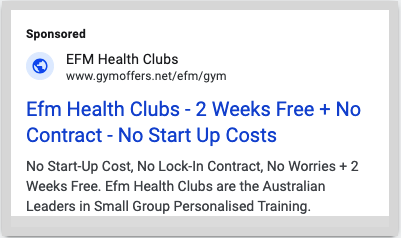Facebook Ads vs. Google Ads: What Is The Difference?
In the digital advertising world, two giants dominate the market: Facebook and Google. Each platform offers unique opportunities and benefits for businesses looking to boost their online presence. However, despite the common aim of increasing visibility and sales, Facebook Ads and Google Ads have distinct differences that could make one more suitable than the other, depending on your marketing objectives. Let’s dive deeper into the main differences between these two powerhouses.
Platform Structure and Ad Placement
Google Ads operates primarily as a search engine marketing platform. It displays ads to users who are actively searching for keywords related to your products or services, which can be an incredibly powerful tool for capturing high-intent traffic. Google Ads are typically text-based and can appear on Google’s search results pages (SERPs) or on websites within the Google Display Network.
Facebook Ads, on the other hand, are part of a social media advertising platform. They use detailed user data to show ads to people who may be interested in your product based on their demographic, interests, behavior, and more. Facebook Ads can appear in various formats, including image, video, carousel, and more, across Facebook, Instagram, Messenger, and the Audience Network.
Targeting Capabilities
The targeting capabilities of Facebook Ads and Google Ads highlight another significant difference.
Google Ads focuses on keyword targeting, reaching users based on the terms they are searching for. This method is ideal for capturing potential customers who have already expressed interest in your product or category.
Facebook Ads allows for more granular audience targeting. You can target users based on age, gender, location, interests, shopping behaviors, and much more. This makes Facebook Ads particularly effective for building brand awareness and targeting potential customers early in the buying cycle.
Ad Formats and Creativity
Creativity plays a diverse role in both platforms:
Facebook Ads provide a wide range of creative formats including photo, video, slideshow, carousel, and instant experiences. This variety allows advertisers to deliver more immersive and interactive ad experiences.
Google Ads has historically been more text-centric, especially in its search network. However, Google also offers display ads, video ads on YouTube, and shopping ads, allowing for some level of creative expression beyond just text.
Intent vs. Discovery
At the core of the difference between Google and Facebook Ads is the user’s intent versus discovery:
Google Ads largely captures user intent. People typing in queries have a specific action or information in mind, making them likely more ready to convert or purchase.
Facebook Ads excel at discovery. They introduce or remind users of a need or interest they might not be actively searching for, effectively generating demand.
Cost and ROI
Budget and return on investment (ROI) factors may vary significantly between both platforms, but here’s a general idea:
Google Ads can be more expensive in terms of cost-per-click (CPC) due to the high intent of its traffic, which often leads to higher conversion rates.
Facebook Ads often have a lower CPC, but achieving a conversion might require a more substantial investment in creating engaging content and targeting the right audience.
Same Business, Different Look - Case Study
As you will see below, the Google Ad and the Facebook ad have the same offer for the same company, but look completely different.
The Google Ad is more keyword driven, provides shorter copy and is non-visual. It targets people that have searched for a gym/fitness related term via Google Search,

The Facebook Ad is more offer driven and very visual. It targets people that haven’t asked to see the ad, but match the audience profile of the advertiser. This means it needs to POP to get their attention.

So which one should you choose?
Choosing between Facebook Ads and Google Ads boils down to understanding your marketing objectives, audience, and how far along they are in the customer journey.
For targeting high-intent users ready to make a purchase, Google Ads may be the way to go. For businesses looking to increase brand awareness or target users based on demographic and psychographic factors, Facebook Ads offer remarkable capabilities.
In many cases, a combination of both platforms can provide the best of both worlds, optimizing your overall digital marketing strategy for maximum impact. Dive into each platform’s strengths, and consider aligning your campaigns to leverage these unique features for your business’s benefit.
The good news is that LBD Marketing offers both Google Ads & Facebook Ads as a service.
To book in a FREE Strategy Call, fill in the form below.




